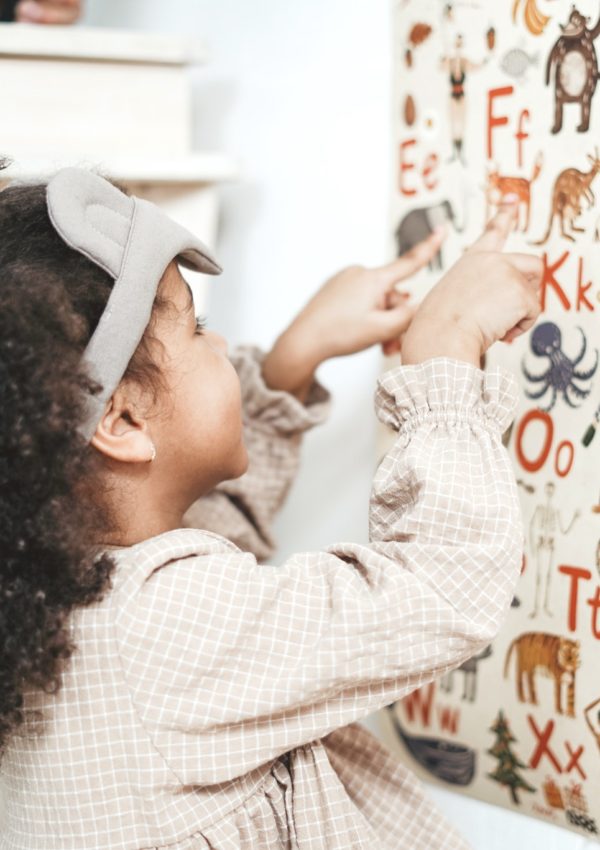I’m sure everyone is wondering at this point how we’re all going to be moving forward with work, school, and life in general. It’s definitely trying times right now as the world battles Covid19 but hopefully this post will help ease at least one of those things for you.
With all the kiddos being home and online learning becoming the new normal, it’s important that you have a couple strategies and tools for your preschoolers as well. After all, elementary students aren’t the only ones who need to learn.
Well, firstly, anything you put your mind to you’ll be able to make happen. Our preschool launched their online learning platform just a week after school closings, so there.
But to be honest most preschools are not doing much in the way of creating a virtual platform for the younger tots, so it’s all on the parents at this point. I know it may seem daunting but with a little help, a template schedule to follow, your days are about to get a lot easier.
Let’s dive in.

*Follow A Simple Schedule
The First thing you are going to want to do is create a schedule for your preschooler. Preschoolers, matter of fact, all kids thrive with structure and routines. It helps them know what to expect so there will be less tantruming about what they can and cannot do.
1. Less Overwhelm
The easiest thing for you do to is to copy the schedule they already follow at their preschool. Remember, we are trying to instill some normalcy and routine back into your kids life. So the fewer new items they have to learn the better. It will also be less overwhelming and that is key. For any child, the harder they think the task is the more pushback you, the parent, will receive. So baby steps, take it easy, and be calm about it.
The other positive about just using their already made preschool class schedule is that it saves you from needing to come up with something completely from scratch.
2. Prep Your Kids
Next, before you just throw your kids back on a schedule, you’re going to need to prep them. Just because the routine and activities might not be new, the environment is. And just because they listen and follow along in school, does not mean they will do the same at home.
The home environment is completely different with different rules and different participants. It’s where the family goes to relax, play, take a load off. Yes, kids do that as well. So pushing a new schedule on them can make them feel bothered, frustrated, and every other word that you can think of that leads up to a tantrum.
Now if you’re child has never been in school and you’re wanting to simply start home schooling them, you may still have some push back but not as bad.
Either way the prep period is necessary for all kids. Talk them about it for a few days. Get their thoughts on it as well so they can feel like they’re part of the decision and it’s not just new rules mommy and daddy are pushing on them. But! Have a definitive deadline of when you are starting. There has to be some kind of timeline in place so they can get ready working up to it.
*Daily Schedule Template
Alright, now that all the prep work is done, let’s look at the different areas of the schedule that you will need to dictate. Most of these things already happen in your home, teachers just like to label each period so the preschoolers know what they’re doing and what comes next.
It won’t be as daunting as it might seem. Let’s take a look.
1. Free-play
Kids do this throughout their day at home already. It’s simply a good idea to put a title on this period so the kids know when they’re able to make independent choices. Make sure your day starts with some free-play so the kids can get warmed up for their day.
2. Circle Time
This should honestly be no more than 10-15 minutes tops. It takes about 15-20mins for our class of 13, for one child it shouldn’t take that long. Sing good morning if you’d like, its a really nice transition into starting the school day, and then review the calendar (month, day, date), weather, and schedule.
For younger kids you can help prompt them the correct information. For older kids they will be able to handle the whole calendar. Remember, just copy what they do at school.
Also, definitely do not skip the schedule. They need to know what is coming next especially if it is a new thing at home.
3. Lesson
This is actually pretty optional. For some parents, handling circle time is enough. But for other that may have a little more time choose different things your child likes to learn about. Because this is heavily parent directed, you’re going to want them to be super engaged or they are going to start to be defiant.
So let them choose the topic, but make sure to interweave, letters and letter sounds, number IDs, counting, and some minor handwriting or coloring. Obviously if they’re too young to really explore a writing curriculum yet then just have them color. The point is to have them get comfortable with a writing tool in their hand.
4. Movement
This is also probably already occurring in the household. With all the energy kids have, I’m sure you’re doing some kind of active period to help expel some of that. If you have a backyard you can take them outside. If you’re in an apartment like a lot of us are in NYC, try a walk or maybe an indoor obstacle course if you have the space and it’s safe.
You can also use the website Go Noodle, which is geared towards getting kids active and moving throughout their school day and actually takes very little participation on your side.
You can also check out my post on other top websites to help your kids keep learning here.
5. Story
It’s important that once the kids are all tired out or done with the movement activity whatever it may be that they have a calm down activity. Stories are the easiest and simplest one you can choose. It allows for the child to take the time to regulate their energy, take deep breaths, and honestly start to get a little sleepy. Basically it acts as a downer before transitioning into lunch and nap.
6. Lunch
This one is pretty self explanatory but I would recommend parents work on independent or semi-independent eating depending on how old your child is. This is huge in preschools and is a great skill to practice.
7. Nap and Snack
This is also pretty self explanatory. Follow your own nap routine and snack.
8. Skill Building Games
This one is kind of optional. It really depends on how much time you have or if you’re need to stay on some work projects and work calls.
However, if you do have the time or really want to work on home schooling your kids, this is a great period for them to have some basic skill building fun! At this point we’re closing in on their school day so having a new lesson or teaching something too complex is too much for their young temperaments. They’re tired and probably just wan to play.
So if you put out some type of semi-independent activities like sequencing puzzles, lacing cards, uni-fex cube building, leggos, they’re still getting the learning done! It just seems to be a little less intentional to them.
9. Free-play
Lastly, once the skill building games are done, allow them to have some more free-choice. This is a ringer to have at the end of the day. It acts as a very strong reinforcer for kids to keep their listening ears on so they can get to that other free-play period.
It’s also a little reward for them getting through their school day and having some fun free-choice to end it with.
After that, the rest of the day is yours! You’ll be left with dinner prep and bed time after a successful day of learning.

*Summary
Alright parents, now you have the schedule, the titles of each period, and a pretty good idea of what each entails. But there are a few things to remember as you begin to introduce this new schedule and learning time to your kids.
You have to practice patience with this as you would for any new transition or change in your kids lives. Change takes time. That’s what the prep period will help with. But be patient. They will adjust in time.
It’s also a very good idea to use visual aids or even some learning links. Kids thrive on visual materials and are much more engaged when they are used. Remember to check my other post on positive learning websites to get a strong list of really cool links.
Lastly, stay motivated. Learning anything new takes time. It takes kids time and it takes adults time. The one thing that we have that kids don’t is self regulation though. You can expect defiance and push back as they get accustomed to their new normal. But stay motivated. This will be better for them once they adjust and better for you guys as well. YOU GOT THIS!
Definitely share your feedback with your fellow parents down below. And as always, If you have any questions or ideas you can share them in the comments section too. And don’t forget to subscribe to the newsletter for updates and ongoing happenings at TylekTeaches.com. The subscription link is just on the right hand side of this post. See you there!









Leave a Reply